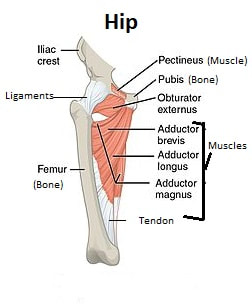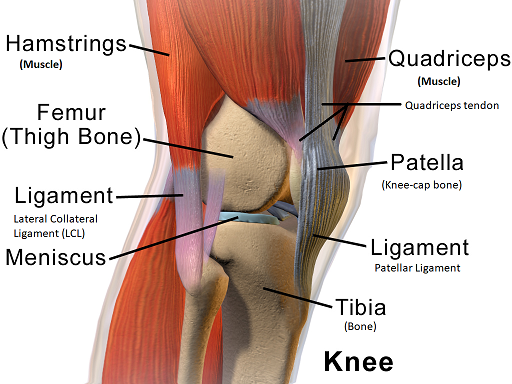|
You know how when you begin an asana, you see it being done by your teacher and it is just perfectly done in alignment and stability. Now you would like to get there, perform it with the same grace and smooth flowing movements, but today you just cannot. Mental note you make to yourself; “I must do all I can to perform this asana exactly like my teacher.”
What if I said there is a magic pill for that. The magic pill is …….exercise or in yogic terms practice or “Sadhana”. When we are grounded in material world it takes form of exercise, for those in the realm of thought, it takes the form of meditation….and when one transcends….there is only bliss of oneness (Samadhi). Albert Einstein said, “if you cannot explain (something you know) simply, you don’t understand it well enough”. Profound! And a big responsibility to carry. So let’s see. Let us consider ligaments and tendons and their role in changing movement patterns. Very relevant, is it not, when we want the range of motion, movement control, cadence, and rhythm we know we do not possess, yet are yearning for? How are ligaments and tendons related to this, you ask? Putting it into perspective, here is how…. In the last 2 posts we looked at the “hardware” which are the bones forming joints and the various soft tissue and their role in action or movement. Joints have a large degree of mobility available and this is amplified by the fact that in a human body, movement is limited by a soft-tissue end-feel (rubbery or springy). Rarely do we feel movement being limited by a bony clunk which represents bone coming in contact with bone at the end of range of motion. So there is always potential range available when it comes to movement of bones at joints. Muscles are inherently the most flexible and stretchable structures in the body. They are also elastic in nature, which means when stretched, they lengthen. However, they retain memory of the original form and recoil back to that length when stretch forces are removed. Muscle function is much affected by the surrounding fascia which is a fluid soft tissue and when used regularly, it acts as a lubricant between structures during movement. Fascia when unused for a period tends to deposit collagenous fibers which are inflexible (they adhere to one another) and cause movement restriction in muscles. The body has the perfect mechanism to overcome this movement restriction, if pursued slowly and steadily. Given good fascia function, the potential of joint mobility and muscle flexibility is significantly enhanced by ligaments and tendons when you are pushing yourself to the limit. In other words, tendons and ligaments operate with self-regulatory mechanisms. And to bring about either increase in range of motion, motor control, or static and dynamic stability in body alignment, these structures are instrumental. Tendons connect the muscles to bones and efficiently transmit the forces produced by muscle contraction, thereby bringing about movement of the bones they connect with. Tendons are made of elastic connective tissue which stretch to some degree, when forces are applied, to bend around joints. This is because they are made of connective tissue which are helical or coiled like a spring. These unfold or stretch to permit the movements. Another role of tendons is to harbor the sensory feedback mechanism to provide the brain information on the force applied –the tension in a contracting muscle and to inhibit movement which is detrimental to integrity of the soft tissue. Kind of like an electric wire which efficiently conducts current and has a fuse in the circuit to prevent overload of current. Ligaments are made of mostly collagenous connective tissue fibers with few elastin fibers and they connect bone to bone at joints. These fibers are also helical like tendons and so their inherent nature is elasticity, though by virtue of the alignment of fibers in multiple crisscross layers, they withstand tensile forces from several directions maintaining joint integrity and stability. Which is why when pushing our bodies beyond the existing range of motion in any direction, requires training- gradual and steady release or lengthening of the ligament fibers. Though ligaments do not stretch much (only 6% of their original length), they open up the “portal” for the proper biomechanical alignment and muscle flexibility to further open up the range of movement. The results can be amazing…we have all seen gymnasts and acrobats perform amazing feats. This does not mean we all have to aspire to be gymnasts! What is revealed to us, is what we must aspire for- nothing more, nothing less. While tendons need some amount of flexibility upfront to perform their function of force transmittal (energy transference), ligaments are not outright flexible and stretchable, however with regular training, the ligaments do undergo lengthening, hence allowing increase in flexibility (Range of motion) at joint. That is to say, ligaments once trained into lengthened position, retain that length and do not recoil back immediately when forces are removed. This basic property of the respective structures enhances the function they undertake-i.e. muscle-tendon units in production and regulation of movement and ligaments in providing stability at joints and joint integrity. Not ignoring other soft tissue in the body like blood vessels and nerves, which also have elastin fibers and accommodate to slow and gradual stretching by not only flexibility, albeit other mechanisms like sliding and gliding to permit movement while maintaining structural integrity. So go on, move and move well. Your body is composed, aligned, and equipped to work with you. P.S. Image credits Figure 1 (Hip Joint) https://opentextbc.ca/…/11-6-appendicular-muscles-of-the-p…/ Figure 2 (knee joint)- "Medical gallery of Blausen Medical 2014". WikiJournal of Medicine 1 (2). DOI:10.15347/wjm/2014.010. ISSN 2002-4436. - Own work
0 Comments
Your comment will be posted after it is approved.
Leave a Reply. |
Details
AuthorAmi Gandhi is a licensed physical therapist in the state of California. She is the owner of StableMovement Physical Therapy, a small boutique practice in San Jose that offers patient centered, one-on-one, hands-on physical therapy. Archives
March 2018
Categories |

